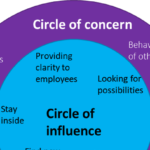Everybody is different; The four main Social Styles
 Do you recognize this? With some people you seem to level straight away, with other people it seems to take a bit longer or it seems you never get in a good communication relationship. The better we know how to connect with someone else, the more mutual trust we experience. Understanding your own social style and the style of the other helps in creating a better level of understanding, connection and communication.
Do you recognize this? With some people you seem to level straight away, with other people it seems to take a bit longer or it seems you never get in a good communication relationship. The better we know how to connect with someone else, the more mutual trust we experience. Understanding your own social style and the style of the other helps in creating a better level of understanding, connection and communication.
The Social Styles Model by Roger Reid and John Merrill is a simple and practical tool for understanding differences in social style. There are 4 main styles:
The 4 most important communication styles: The driver, the expressive, the amiable, the analytical
Driver
 Drivers are very direct about the results they expect. They are not concerned with what other people think of them and are therefore often independent and direct.
Drivers are very direct about the results they expect. They are not concerned with what other people think of them and are therefore often independent and direct.
Unwittingly, they can hurt others with ill-considered words, criticism and overcontrol.
A driver likes to see what results is to be gained, only then you get real interest.
Expressive

People with an Expressive communication style want to make contact and feel togetherness, they like to talk about feelings, speak loudly and have a high tempo. They are able to convey an appealing vision.
The Expressive are not very good with hierarchy: just telling him or her what needs to be done is not very effective and will easily lead to resistance and sarcasm.
Amiable

The person with the Amiable style gives and likes to get personal attention. They communicate at a slower pace, need thinking time and are indirect. Sometimes it will be difficult to tell what they really think.
He / she has difficulty with sudden changes, it helps to take him/her along slowly, step by step.
Analytical

The Analytical is very concrete and usually well prepared, with lots of details. With their problem-researching attitude, the Analytical is more focused on ideas and concepts than on relationships and feelings.
To connect with someone with an Analytical preferred style, it is important to take time, to have an eye for detail and focus on facts and arguments.
Background and use of the Social Styles Model
The Social Styles Model was discovered in the early 1960s by two American psychologists, Roger Reid and John Merrill. They found that based on just 3 dimensions, one can predict surprisingly accurate how a person will interact with work and relationships.
In addition to the dimension Versatility, the model works with the two dimensions of Assertiveness and Responsiveness.
The model is intended to reduce tension in a relationship. To increase understanding and respect. To improve collaboration and results. It’s not meant to label people.
Therefore, when using the styles, always remember:
- No one IS his Social Style; a human being consists of multiple dimensions.
- None of the Social Styles is good or bad. They all have strengths and weaknesses.
- Chances are you’re showing behaviors from all 4 styles. There will probably be one.
- How you deal with your social style and with others is more important than what your social style is.
The chance that you yourself estimate your social style well is about 50%….
Assertiveness and responsiveness
 Assertiveness: How do you get what you want? Asking versus telling. Taking space versus leaving space
Assertiveness: How do you get what you want? Asking versus telling. Taking space versus leaving space
A person with high assertiveness is typically inclined to tell clearly what he wants. People with high assertiveness tend to tackle problems instead of delaying them. They have greater self-confidence and believe they have the right to ask for what they need. Sometimes they see life as “survival of the strongest”, which makes them think they have to fight for what they want. It often makes them more competitive, more alert and makes them take risks faster.
A person with low assertiveness who wants something will ask another or wait for the other person to offer it. People with low assertiveness do not like conflicts and risks. Sometimes they hope to get away from problems. They are often inquisitive and often work with other people. People can have low assertiveness for a variety of reasons, for example for fear of criticism, or from a learned modesty, or from a high degree of ability to take other people into account.
Responsiveness: How do you respond to other people’s questions or demands? People-oriented versus task-oriented
A person with high responsiveness has more emotion in his reaction to others. This can come across as empathy, but it may also be that someone simply has less control over their own emotions. People with high responsiveness are usually human-oriented.
Someone with low responsiveness puts less emotion into his reactions. They often take more time to think about their reaction, which often slows it down and is more rational.
Get started
 Do you want to dive into this a but further or get started right away?
Do you want to dive into this a but further or get started right away?
Feel free to immediately plan a half hour sparring with Sandra Geelink directly in the agenda.
 Assertiveness: How do you get what you want? Asking versus telling. Taking space versus leaving space
Assertiveness: How do you get what you want? Asking versus telling. Taking space versus leaving space
